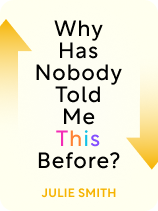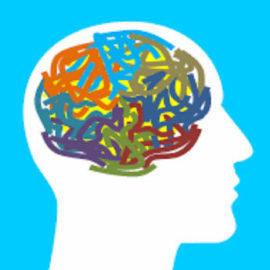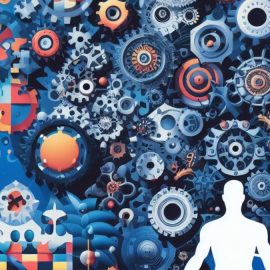

This article is an excerpt from the Shortform book guide to "Why Has Nobody Told Me This Before?" by Julie Smith. Shortform has the world's best summaries and analyses of books you should be reading.
Like this article? Sign up for a free trial here.
What are emotions? When is it healthy to have challenging emotions? How aware of your own feelings are you?
According to Dr. Julie Smith, the most important thing to know about emotions is that they are a normal part of the human experience. That goes for the highs and the lows. What matters most is that they match the situation.
Read more to learn how to understand emotions and work with them in a healthy way.
How to Understand Emotions
Smith explains that it’s healthy to have a range of emotions, even if some of them are negative. Life isn’t about being happy and content all the time—it’s about meeting challenges, adapting to change, and, ultimately, surviving to see another day. Emotions are a natural response to your physical and psychological states as you navigate these changes and challenges. She shares some of the science behind emotions, which can help you know how to understand emotions and ultimately accept them.
(Shortform note: In The Happiness Trap, Russ Harris explains that the idea that life is all about achieving happiness is a myth that causes us distress. American society reinforces the belief that everyone can and should be happy. Images of happy people are used to sell us things and keep us engaged on social media. Happiness is even included in the U.S. Declaration of Independence as a fundamental human right. However, Harris says human beings are not naturally or easily happy because our minds did not evolve for happiness—they evolved for survival: spotting danger and staying safe, being a part of a group, and constantly searching for and collecting essential things like food and water.)
Emotions are your brain’s attempt to make sense of what’s happening, both inside you and in the world around you. When you experience an event, your brain takes all the information it gathers from your senses, your body (your heart rate, blood pressure, breathing rate, hormones, and the like), and your memories of when you felt similarly in the past. It then makes an interpretation of all the data it has, which we often experience as emotions.
(Shortform note: Many psychology experts in the West agree that emotions are complex, natural, healthy, and adaptive responses of the brain and body to internal and external changes. However, in different cultures, organs besides the brain are viewed as the origin of emotions. For example, in traditional Chinese philosophy and medicine, five main emotions are generated and affected by different organs in the body. For instance, the heart creates and is stimulated by joy, and the lungs create and store grief. Internal and external changes trigger emotions from our organs, and our brains are viewed as responsible only for our intellects.)
How to Relate to Your Emotions
Our feelings can provide valuable information, but they don’t necessarily reflect the whole truth of a situation. This means that we shouldn’t rely solely on emotions to dictate how we behave, make decisions, or interact with others, because, if we don’t take a beat to consider other information or perspectives, we can hurt our relationships and get stuck in harmful ruts of behavior.
However, because emotions can give you a clue about something you may need, it’s helpful to develop a relationship with them to better understand and work with them. To do so, Smith says you should develop both awareness and acceptance of your emotions.
(Shortform note: In Emotional Intelligence, Daniel Goleman explains why emotions aren’t complete and accurate reflections of reality: Emotions happen in response to our survival needs and are crafted by the brain to spur us into immediate action without pausing to think rationally. The part of our brain responsible for emotions, the limbic system, is already developed when we’re born, while the rational thinking part, the neocortex, keeps learning and changing as we grow. This means our emotional reactions to many things were already formed before we could understand them. Goleman agrees with Smith that even though we can’t change how we feel initially, we can learn healthy ways to respond to our emotions.)
Develop awareness of your emotions. When you can consciously identify your emotions, you create space between you and your feelings so that you can pause, reflect, and assess the bigger picture. This enables you to act based on all available information as well as your values. When you’re emotionally aware, you can also recognize what your emotions are telling you about what you need. Smith says emotions often try to communicate a physical need: You may be tired, over-caffeinated, hungry, too hot or cold, or you may need to move your body.
(Shortform note: In Emotional Intelligence 2.0, Travis Bradberry and Jean Greaves posit that having emotional awareness is the same as having self-awareness. Not only can self-aware people pause to figure out why they feel the way they do and act accordingly, but they can also use emotional experiences as learning opportunities to identify who or what makes them upset, figure out what they’re good at and what they’re not, and better understand what motivates them.)
Practice accepting your emotions. Many people fear feeling emotions because they’re taught that emotions are inappropriate and should be hidden and denied, or because emotions can be overwhelming and frightening. But Smith writes that you shouldn’t resist or attempt to escape your emotions, because trying to stop them actually makes you feel worse. Even when you can numb your emotions with things like alcohol, television, and social media, you’re not actually making them disappear—the emotions will be waiting for you once your distraction ends. In addition, those coping methods can be self-destructive or point us down a path that leads away from our long-term goals and values.
Instead, understand that emotions are not permanent. Smith explains that if you can notice an emotion, accept that it’s happening, and let yourself feel it, then the emotion will pass through you and dissipate.
(Shortform note: Not all cultures react to negative emotions by numbing and distracting themselves. Buddhists, for example, use meditation to mindfully observe their emotions without judgment and allow them to pass. In When Things Fall Apart, Pema Chödrön explains that they do this because they see emotions as impermanent, and they believe clinging to them or, alternatively, trying to escape them only leads to suffering. Even in cultures that value this kind of emotional processing, though, there may still be individuals who engage in unhealthy coping mechanisms. Regardless, these cultures tend to overall have a stronger sense of community, which can help people cope with difficult emotions in a healthy way.)

———End of Preview———
Like what you just read? Read the rest of the world's best book summary and analysis of Julie Smith's "Why Has Nobody Told Me This Before?" at Shortform.
Here's what you'll find in our full Why Has Nobody Told Me This Before? summary:
- Practical tips for managing difficult emotions and thoughts
- Why self-compassion is key to mental health and how you can cultivate it
- How to change your relationship with failure






